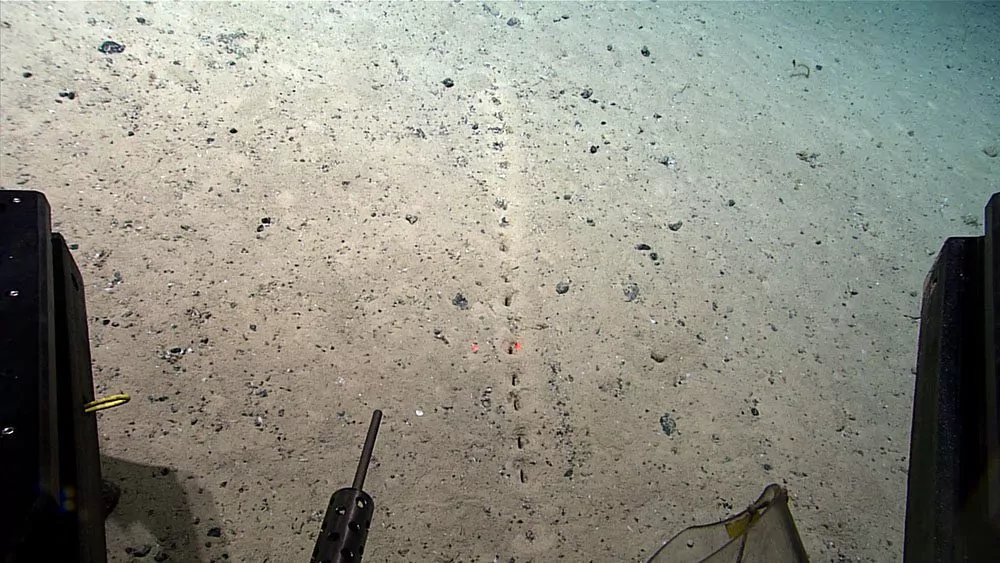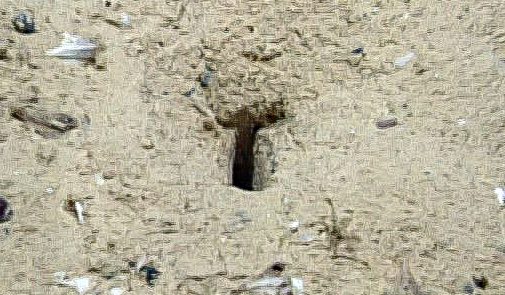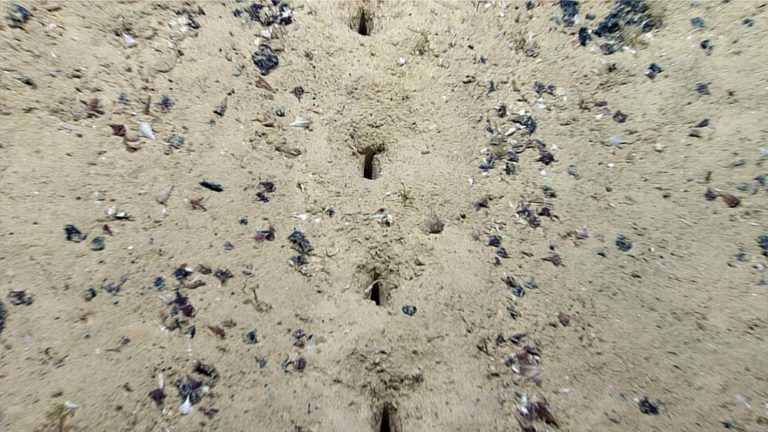A series of mysterious holes, laid out in a regular pattern on the mid-Atlantic seabed at a depth of 2.54km and recorded on a recent ROV dive, have set scientists scratching their heads.
Also read: Deep octopus nurseries on ‘edge of human imagination’
The USA’s National Oceanic & Atmospheric Administration (NOAA) and its partners have been conducting their Voyage to the Ridge 2022 series of three ocean exploration expeditions aboard the Okeanos Explorer since May. The expeditions, which end in September, include mapping operations and ROV dives to collect data about unexplored deepwater areas of the north Atlantic.
On the fourth dive of the second expedition, which ended on 30 July and was concentrating on the Mid-Atlantic Ridge (MAR) north of the Azores and the Azores Plateau, the researchers spotted several sets of holes in the seabed sediment, arranged in neat lines.


“While the holes look almost human-made, the little piles of sediment around them suggest they had been excavated,” reported the team. “We attempted but were not able to take a peek into the holes and poke them with the tools on the ROV.” Nor was it apparent whether the holes connected beneath the surface.
At 16,000km the MAR is the world’s longest mountain range, most of it under water, largely unexplored and subject to frequent earthquakes. It also features hydrothermal vents that can support diverse lifeforms.
The scientists have now appealed to members of the public who follow their expeditions on social media platforms such as Twitter and Facebook to put forward their own ideas about how these holes formed. Responses so far have ranged from aliens to an unknown crab species to gas rising up from below the seabed and more. But why the patterns?
It turns out that scientists have come across such enigmatic holes before – 18 years ago. Several sets were spotted at a depth of 2.082km on the northern MAR in July 2004, and prompted a report that came to no firm conclusions, though it was hypothesised that the raised sediment could indicate the action of some unknown creature.
“The unknowns we encounter are often as deep and mysterious as the ocean itself,” comments the NOAA team. “With each expedition to map and explore ocean depths, however, we learn more about this ecosystem that is so vital to all of our lives.” The ROV dives are streamed daily between 11.45am to 10pm BST.
Also on Divernet: Yellow Brick Road Surprises Researchers, Rare Underwater Sightings In Pacific, World’s Biggest Sponge Found Off Hawaii, Deep Jelly Named – No Sample Required

